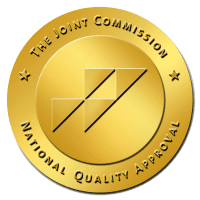Studies show that nearly 50,000 Americans die every year from overdosing on opioids, and more than 10 million people misuse them each year.
These addictions often begin when people are legally prescribed opioids to help manage their pain. Then, they become hooked on the effects they produce and find it difficult to break free of the habit, even after their pain or condition subsides.
This cycle is especially common with extra-strength painkillers, such as hydrocodone and acetaminophen, which can be sold together under the brand name Norco 5-325.
Has someone you love asked you, “Can you snort hydrocodone acetaminophen 5 325?” If so, this could be a sign that they’re misusing this medication and suffering from an opioid addiction. Today, we’re sharing more about this medication and the signs to look out for.
What Is Hydrocodone Acetaminophen 5 325?
Also known as Norco 5-325, this is a combination of two different medications:
- Hydrocodone
- Acetaminophen
Classified as an opioid analgesic (pain reliever) and antitussive (cough suppressant), it also helps relieve fevers. As such, doctors can prescribe it to treat moderate to relatively severe pain in patients who need it. In addition to the brand name, it’s also available in generic form.
To understand why this medication is so powerful, and what makes it so addictive, let’s break down these components.
Hydrocodone
Research reveals that hydrocodone is the most commonly prescribed pain medication in the United States. Due to its accessibility, it’s also one of the most commonly abused opioids on the market. In addition to Norco 5-325, it’s also found in drugs like Vicodin and Lortab.
This narcotic medication alters the way an individual’s brain and nervous system respond to pain signals. It does so by binding to the opioid receptors in a person’s brain. This slows down their breathing rate, induces a sense of relaxation, and triggers the reward system of the brain.
All of these effects can increase hydrocodone’s risk of addiction. Due to this, the U.S Drug Enforcement Administration (NEA) changed all hydrocodone combination products from a Schedule III to Schedule II substance in 2014. The drugs that are included in this category are ones known to have a high potential for abuse, which can cause both psychological and physical dependence.
Manufacturers create hydrocodone by adding synthetic chemicals to codeine, which occurs naturally in the opium poppy plant. Legally available by prescription, it’s often combined with other medications, such as antihistamines or acetaminophen (as in Norco). Available in both immediate and extended-release formulas, it’s often sold in the form of pills, capsules, tablets, or cough syrup.
Doctors may prescribe hydrocodone for patients who need a significant amount of pain management. This includes those who are:
- Recovering from surgery
- Have experienced physical trauma
- Have cancer
For patients who are suffering from coughs or respiratory distress, hydrocodone is often combined with another powerful medication, acetaminophen.
Acetaminophen
Like hydrocodone, acetaminophen is a pain reliever and fever reducer. It’s the primary active ingredient in Tylenol products and can be found over the counter as well as via prescription (usually in higher strengths). Some of the other types of acetaminophen you may be familiar with are:
- NyQuil and DayQuil
- Excedrin
- Sudafed
- Mucinex
- Robitussin
- Goody’s
- Zicam
This medication helps elevate an individual’s overall pain threshold so they don’t feel as much pain. It can also help their body eliminate excess heat, which can lower fevers. Some of the conditions that acetaminophen is commonly used to treat include:
- Headache
- Muscle ache
- Backache
- Toothache
- Minor arthritis pain
- Pre-menstrual and menstrual cramps
Combining this drug with hydrocodone can increase the efficacy of the two substances. Researchers have also discovered that the combination can be used to treat deep coughs.
Common Side Effects of Norco 5-325

If someone takes Norco 5-325 under their doctor’s orders and in accordance with their provided guidelines, then the potential for misuse or overdose is low. However, dangerous side effects can occur if an individual takes more than their recommended dosage, or ingests the substance in a way that is not approved.
Mild Side Effects
Some of the most common side effects associated with this medication include:
- Dizziness
- Lightheadedness
- Nausea
- Vomiting
- Constipation
- Headache
- Anxiety
- Blurred vision
- Changes in mood
- Dry mouth
- Ringing in the ears
While these symptoms can be uncomfortable and even painful, they’re not usually considered severe. However, continually abusing drugs like Norco 5-325 can lead to more serious side effects, as described below.
Serious Side Effects
Some of the more serious side effects that can occur from misusing or overdosing on Norco 5-325 include:
- Significant eye symptoms (e.g. sudden vision loss, very blurry vision, eye pain or inflammation, tunnel vision)
- Significant heart symptoms (e.g. passing out, fast or irregular heartbeat, shortness of breath, fluttering in your chest)
- Sudden dizziness
- Severe headache
- Weakness in limbs
- Difficulty walking
- Confusion and disorientation
- High fever
- Severe perspiration
- Slurred speech
- Unsteadiness or loss of coordination
- Very stiff muscles
- Body tremors
If you notice any of these effects in yourself or a loved one, it’s critical to seek immediate medical attention.
Possible Drug Interactions
Before taking Norco 5-325, be sure to tell your doctor if you’re also taking any of the following medications, as they could negatively interact with the ingredients in this drug:
- Other types of narcotic pain medications
- Tranquilizers
- Sedatives
- Muscle relaxers
- Sleeping pills
- Antidepressants
- MAO inhibitors
- Bladder or urinary medications
- Irritable bowel medications
It’s important to let your doctor know if you’re taking any type of medication, vitamins, or supplements before beginning a new medical regimen. Taking these substances together can heighten your risk of certain side effects. This is especially the case if you mix Norco 5-325 with drinking alcohol for a stronger effect or other drugs.
Misusing and Abusing Hydrocodone

This medication is most commonly prescribed in pill or tablet form. The standard dosage is one tablet, taken every four to six hours as needed for pain management. In most cases, adults should not take more than six tablets per day.
It’s important to realize that anyone taking this medication could misuse it, and the action isn’t always intentional. For instance, an individual might consume more hydrocodone than recommended, simply because they want to feel better and think this will help them get there, failing to recognize the serious consequences that could occur.
Or, they may use someone else’s prescription, even if it’s at a dosage that might not be safe for them to take. Over time, this behavior can turn into abuse. Signs that someone is abusing hydrocodone include:
- Injecting the medicine’s liquid form into their veins
- Smoking crushed hydrocodone tablets
- Using more of the substance specifically to get high
- Crushing and snorting hydrocodone tablets
That last method has become increasingly popular, so let’s give it a closer look.
Can You Snort Hydrocodone Acetaminophen 5 325?
To feel the effects much sooner, some people who are addicted to this substance will choose to crush the contents of the pill and snort them instead. To do so, they grind the pills into a fine powder, which they can take through their nose.
This allows the drug to enter their bloodstream much more quickly. The rapid onset of the drug leads to an almost instant feeling of pain relief and euphoria. While the high might be intense, it’s usually short-lived, which causes the users to crave another dose almost as soon as they finish the first.
While it might bring relief at first, the unfortunate reality is that taking the medication in this way can also lead to a higher risk of toxic effects, as well as drug abuse. For instance, in this case study, an individual who had been snorting hydrocodone for two months experienced hypersensitivity pneumonitis, which led to respiratory failure.
This condition is a type of immune system disorder in which a person’s lungs become inflamed in an allergic reaction to inhaling certain microorganisms., plants, or animal proteins. In this specific case, the symptoms the patient exhibited included:
- Dry, wheezing cough
- Hypoxia (low oxygen in body tissues)
- Fever
- Shortness of breath
Misusing hydrocodone in this way for even one week can catalyze a physical addiction. When individuals reach this point, they will likely experience symptoms of withdrawal when they stop using the drug.
At Purpose Healing Center, our locations offer a dedicated setting, supervised by medical professionals, specifically designed to ease opioid detox symptoms.
The Effects of Snorting Norco 5-325
When hydrocodone products contain acetaminophen, most people specifically choose to crush the extended-release tablets when they intend to snort them. By doing so, they can feel high doses of this strong opioid all at once.
This activity is dangerous because it goes against the way that the medication is produced. This drug is intended to be consumed orally and should pass through a person’s digestive system before entering their bloodstream. It’s meant to be released gradually into the body, not all at once.
When someone snorts hydrocodone, it’s instantly absorbed through the mucous membranes in their throat, nose, and roof of their mouth. From there, it goes into their bloodstream, where it’s quickly carried to the brain.
As a result of this action, the person can feel the effects of the medication about two to 15 minutes later. This method allows them to avert their digestive system and instead, send the drug more quickly to their central nervous system, where it can start binding to opioid receptors.
Complications of Snorting Hydrocodone

The most serious effect of snorting this drug is that it increases the likelihood of drug abuse and overdose. This can lead to painful outcomes, including:
- Dizziness
- Anxiety
- Constipation
- Headache
- Stomachache
- Nausea or vomiting
- Slow, shallow breathing
- Loss of consciousness
When someone becomes addicted to snorting Norco 5-325, they can also overdose or experience withdrawal symptoms if they try to quit. In addition to this major risk, there are other side effects and complications to know, and that offer even more reasons to consider medical detox services such as our purpose-built facilities for detoxification.
Let’s take a look.
Damage to the Throat and Lungs
Snorting hydrocodone can send traces of the substance into the back of someone’s nose. Once there, it can drip into their throat. If it travels far enough, it could even reach their vocal cords and cause hoarseness. If it goes down even more, it can even drip into their lungs.
If hydrocodone comes into contact with a person’s lung tissue, it can lead to inflammation and irritation. This symptom is especially painful for anyone who already suffers from a respiratory condition such as asthma. Other conditions that can occur include:
- Weight loss
- Breathing difficulties
- Respiratory failure
Harm to the Nose
This behavior can also damage a person’s nose. The tissue lining this organ is very thin, delicate, and susceptible to tearing. On the surface level, snorting drugs can cause the nose to become irritated and uncomfortable. For instance, the person might suffer from a perpetually runny nose, or develop frequent nosebleeds.
If this action continues, it can erode the nasal tissue over time, causing a hole to develop in the person’s nasal septum (space between the nostrils). In addition, a hole can also form on the roof of the person’s mouth. Corresponding issues can include:
- Breathing difficulties
- Eating/drinking difficulties
- Swallowing difficulties
- Whistling sound when breathing
- Crusting around the nose
- Facial pain
- Facial swelling
- Septal perforation
- Active necrosis (dead tissue inside nose)
Spread of Infectious Diseases
When someone crushes and then snorts hydrocodone, they typically do so on a hard surface. These surfaces can easily become contaminated, and germs could enter the substance. From irritants and contaminants to toxins, they can range in their level of harm.
This risk is exacerbated when the person uses paraphernalia to support their habit, such as razor blades or papers. Especially when these items are shared by more than one person, they can spread germs and disease.
Seek Help for an Opioid Use Disorder

Even if someone hasn’t directly asked you, “Can you snort hydrocodone acetaminophen 5 325?”, there may be other signs that they’re suffering from an opioid use disorder.
Misusing any form of prescription medication can lead to potentially fatal outcomes, and it’s important to know the treatment and support options that are available. At Purpose Healing Center, we’re here to help patients overcome their addictions and find a happier, healthier tomorrow.
We’re an Arizona AHCCCS rehab with a dedicated, experienced team and state-of-the-art amenities. Contact us today to learn more about the services we offer.



